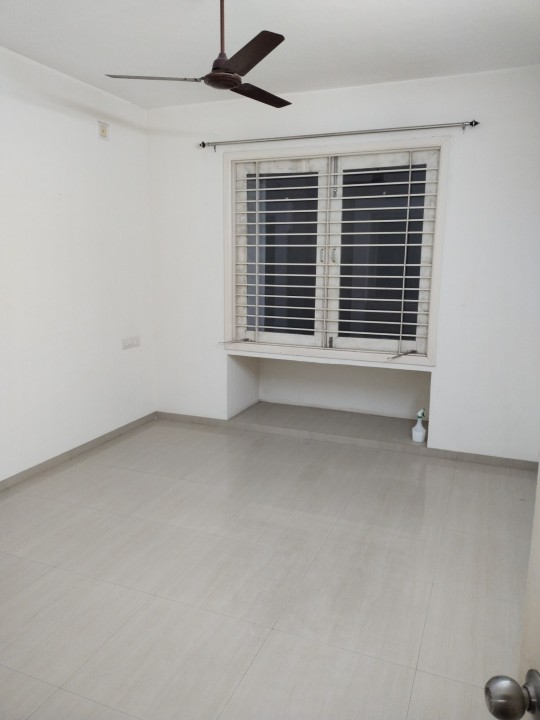#building industry
Text
Cracked tiles, wonky gutters, leaning walls – why are Britain’s new houses so rubbish? | Homes | The Guardian
8 notes
·
View notes
Photo

Red Sequoia Trees aka Californian Redwood
#original photography#original photographer#photographers on tumblr#redwoods#hardwood#building industry#timber#housing#landscape#Otway National Park#great ocean road#roadtrip#short holiday#australian landscapes#Australian photography#australian photographers
26 notes
·
View notes
Text
We are now on YouTube kindly subscribe my channel for more information about property...
#facebook#luxurious#luxurious villas#realestateworld#property#investors#realestate#buysell#gujarati people#newhome#building industry
3 notes
·
View notes
Text
Canberra’s Design & Build Extension Specialists
At Build Professional we specialise in providing a complete design and build service for home extensions and remodelling projects. Through our client-focused approach, quality design and construction come together to improve homes and ultimately, lifestyles.
With more than 45 years of experience, we are realistic and accurate in our advice and have the knowledge and systems to back it up. Over these years, we have developed a specialised and supportive approach to extending and remodelling homes, which will ensure we provide you and your family with a great experience, great outcomes and great value.
Years of Experience
Our team’s capacity to consistently produce outstanding results for our clients is founded on the vision and experience of more than 25 years of our Director Matthew Hall. Matthew has managed his own successful award winning company that has earned his reputation in the Canberra region.
In-House Design
Your extension or remodelling project starts and ends with us. Build Professional offers an in-house design service, meaning that we can use our experience to help shape your ideas into a building plan and then seamlessly move into making it a reality.
Recognised as Industry Leaders
Over the years we have consistently won a number of industry awards, including the 2015 and 2016 HIA ACT/Southern NSW Professional Small Builder of the Year. While we are proud of this recognition for the work of our talented team, winning awards is never our intention. Our intention is always to deliver each and every client with the best possible outcome for your home extension and renovation.
Build Professional is committed to the building industry and we are proud members of the Master Builders Association, Housing Industry Association and Building Designers Australia. We are also recognised as HIA Greensmart Professionals and a Sustainability Design Specialist.
Matthew Hall is currently a member of the HIA Residential Executive Committee and HIA National Technical Committee.
#building design#building designers#renovation#home extension#remodeling projects#building industry#designers and builders
2 notes
·
View notes
Text

What Are Seven Most Common Construction Site injuries?
From building new homes, to keeping infrastructure up-to-date and safe – construction workers play an essential role in making our country the forefront of progress.
Without them, we wouldn’t have cities bustling with life or industry that moves us forward each day!
In 2021, the U.S. Bureau of Labor Statistics gave us a startling statistic: over two and a half million workers in private industry suffered from accidents or illnesses – testifying to precisely how challenging life on the job can be!
Construction crews brave the risks of a hazardous occupation every day—from operating heavy machinery to erecting towering edifices. Despite safety regulations and precautions, too many workers are still being injured or killed in construction-related accidents annually.
Read more on blog...
4 notes
·
View notes
Text
101 Things You Should Know About the UK Tory Government
Thing 59
“Number of new social homes being built down 90% since Tories came to power in 2010." (Independent: 19/06/18)
“Conservative Government Hasn't Built A Single Starter Home Since Pledging 200,000 Houses Four Years Ago." (Huffpost: 05/11/19)
“Councils are unable to house homeless people in their areas due to a lack of affordable housing, leaving a third of those who contacted their local authority remaining, or becoming homeless.” (Landlord News.co.uk: 12/03/20)
“... the number of homeless people in the U.K. has risen by 83% over the past decade.” (The British Tribune: 07/12/21)
What is the government response to this growing crisis? Blame the lack of housing on the quality of design and build of new houses.
“Much of the opposition to new housing developments is often grounded in a fear that the quality of the new buildings and places created will be deficient and therefore detrimental to existing neighbourhoods and properties.
"If a general improvement in the standard of design reassures the general public that this will in fact not be the case, then they may be less likely to oppose it." (Michael Gove: December 2022)
Michael Gove (Secretary of State for Levelling Up, Housing and Communities and Minister for Intergovernmental Relations) may well be right when he says poor build quality and design lead to local opposition to new housing developments. What he neglects to say, however, is that it is government who is responsible for building regulations controlling quality of build and design.
“Building regulations are minimum standards for design, construction and alterations to virtually every building. The regulations are developed by the UK government and approved by Parliament.” (Building control - Building control - Planning Portal)
It really is time the Tory government accepted responsibility for its inaction.
#uk politics#michael gove#housing crisis#homelessness crisis#passing the buck#building industry#false promises#Tory government#austerity.
2 notes
·
View notes
Text
MIT announces 2024 Bose Grants
New Post has been published on https://thedigitalinsider.com/mit-announces-2024-bose-grants/
MIT announces 2024 Bose Grants


MIT Provost Cynthia Barnhart announced four Professor Amar G. Bose Research Grants to support bold research projects across diverse areas of study, including a way to generate clean hydrogen from deep in the Earth, build an environmentally friendly house of basalt, design maternity clothing that monitors fetal health, and recruit sharks as ocean oxygen monitors.
This year’s recipients are Iwnetim Abate, assistant professor of materials science and engineering; Andrew Babbin, the Cecil and Ida Green Associate Professor in Earth, Atmospheric and Planetary Sciences; Yoel Fink, professor of materials science and engineering and of electrical engineering and computer science; and Skylar Tibbits, associate professor of design research in the Department of Architecture.
The program was named for the visionary founder of the Bose Corporation and MIT alumnus Amar G. Bose ’51, SM ’52, ScD ’56. After gaining admission to MIT, Bose became a top math student and a Fulbright Scholarship recipient. He spent 46 years as a professor at MIT, led innovations in sound design, and founded the Bose Corp. in 1964. MIT launched the Bose grant program 11 years ago to provide funding over a three-year period to MIT faculty who propose original, cross-disciplinary, and often risky research projects that would likely not be funded by conventional sources.
“The promise of the Bose Fellowship is to help bold, daring ideas become realities, an approach that honors Amar Bose’s legacy,” says Barnhart. “Thanks to support from this program, these talented faculty members have the freedom to explore their bold and innovative ideas.”
Deep and clean hydrogen futures
A green energy future will depend on harnessing hydrogen as a clean energy source, sequestering polluting carbon dioxide, and mining the minerals essential to building clean energy technologies such as advanced batteries. Iwnetim Abate thinks he has a solution for all three challenges: an innovative hydrogen reactor.
He plans to build a reactor that will create natural hydrogen from ultramafic mineral rocks in the crust. “The Earth is literally a giant hydrogen factory waiting to be tapped,” Abate explains. “A back-of-the-envelope calculation for the first seven kilometers of the Earth’s crust estimates that there is enough ultramafic rock to produce hydrogen for 250,000 years.”
The reactor envisioned by Abate injects water to create a reaction that releases hydrogen, while also supporting the injection of climate-altering carbon dioxide into the rock, providing a global carbon capacity of 100 trillion tons. At the same time, the reactor process could provide essential elements such as lithium, nickel, and cobalt — some of the most important raw materials used in advanced batteries and electronics.
“Ultimately, our goal is to design and develop a scalable reactor for simultaneously tapping into the trifecta from the Earth’s subsurface,” Abate says.
Sharks as oceanographers
If we want to understand more about how oxygen levels in the world’s seas are disturbed by human activities and climate change, we should turn to a sensing platform “that has been honed by 400 million years of evolution to perfectly sample the ocean: sharks,” says Andrew Babbin.
As the planet warms, oceans are projected to contain less dissolved oxygen, with impacts on the productivity of global fisheries, natural carbon sequestration, and the flux of climate-altering greenhouse gasses from the ocean to the air. While scientists know dissolved oxygen is important, it has proved difficult to track over seasons, decades, and underexplored regions both shallow and deep.
Babbin’s goal is to develop a low-cost sensor for dissolved oxygen that can be integrated with preexisting electronic shark tags used by marine biologists. “This fleet of sharks … will finally enable us to measure the extent of the low-oxygen zones of the ocean, how they change seasonally and with El Niño/La Niña oscillation, and how they expand or contract into the future.”
The partnership with sharks will also spotlight the importance of these often-maligned animals for global marine and fisheries health, Babbin says. “We hope in pursuing this work marrying microscopic and macroscopic life we will inspire future oceanographers and conservationists, and lead to a better appreciation for the chemistry that underlies global habitability.”
Maternity wear that monitors fetal health
There are 2 million stillbirths around the world each year, and in the United States alone, 21,000 families suffer this terrible loss. In many cases, mothers and their doctors had no warning of any abnormalities or changes in fetal health leading up to these deaths. Yoel Fink and colleagues are looking for a better way to monitor fetal health and provide proactive treatment.
Fink is building on years of research on acoustic fabrics to design an affordable shirt for mothers that would monitor and communicate important details of fetal health. His team’s original research drew inspiration from the function of the eardrum, designing a fiber that could be woven into other fabrics to create a kind of fabric microphone.
“Given the sensitivity of the acoustic fabrics in sensing these nanometer-scale vibrations, could a mother’s clothing transcend its conventional role and become a health monitor, picking up on the acoustic signals and subsequent vibrations that arise from her unborn baby’s heartbeat and motion?” Fink says. “Could a simple and affordable worn fabric allow an expecting mom to sleep better, knowing that her fetus is being listened to continuously?”
The proposed maternity shirt could measure fetal heart and breathing rate, and might be able to give an indication of the fetal body position, he says. In the final stages of development, he and his colleagues hope to develop machine learning approaches that would identify abnormal fetal heart rate and motion and deliver real-time alerts.
A basalt house in Iceland
In the land of volcanoes, Skylar Tibbits wants to build a case-study home almost entirely from the basalt rock that makes up the Icelandic landscape.
Architects are increasingly interested in building using one natural material — creating a monomaterial structure — that can be easily recycled. At the moment, the building industry represents 40 percent of carbon emissions worldwide, and consists of many materials and structures, from metal to plastics to concrete, that can’t be easily disassembled or reused.
The proposed basalt house in Iceland, a project co-led by J. Jih, associate professor of the practice in the Department of Architecture, is “an architecture that would be fully composed of the surrounding earth, that melts back into that surrounding earth at the end of its lifespan, and that can be recycled infinitely,” Tibbits explains.
Basalt, the most common rock form in the Earth’s crust, can be spun into fibers for insulation and rebar. Basalt fiber performs as well as glass and carbon fibers at a lower cost in some applications, although it is not widely used in architecture. In cast form, it can make corrosion- and heat-resistant plumbing, cladding and flooring.
“A monomaterial architecture is both a simple and radical proposal that unfortunately falls outside of traditional funding avenues,” says Tibbits. “The Bose grant is the perfect and perhaps the only option for our research, which we see as a uniquely achievable moonshot with transformative potential for the entire built environment.”
#000#2024#250#air#alerts#Alternative energy#Animals#applications#approach#architecture#baby#batteries#Building#building industry#carbon#Carbon dioxide#carbon emissions#Carbon sequestration#change#chemistry#clean energy#climate#climate change#clothing#cobalt#computer#Computer Science#concrete#construction#corrosion
0 notes
Text
Thị trường nhà ở các nước phát triển phục hồi
Đà giảm giá nhà trên toàn cầu, ảnh hưởng đến các nền kinh tế tiên tiến, phần lớn đã dịu lại, theo phân tích của Financial Times (FT) dựa trên dữ liệu của Tổ chức Hợp tác và phát triển kinh tế (OECD). Các nhà kinh tế dự đoán cơn suy thoái bất động sản nhà toàn cầu nghiêm trọng nhất trong một thập niên có thể sắp chạm đáy.
Nhà cửa được xây dựng tại khu dân cư Valley Center, bang California, Mỹ.…

View On WordPress
#architect#architect of the year#architecture#architecture festival#architecture movies#architecture news#ashow#ashui#ashui asia#ashui awards#ashui pavilion#ashui vietnam corporation#ashuicom#asia architects network#bất động sản#bất động sản xanh#biến đổi khí hậu#build#building#building industry#building material#building of the year#cà phê kiến trúc#các#chủ đầu tư của năm#cities for people#city leaders#city vision#climate change#công trình của năm
1 note
·
View note
Text

Key Strategies for Home Building Prosperity
Explore the key strategies that lay the foundation for prosperity in home building. This guide delves into quality control, sustainable practices, and effective marketing strategies that elevate builders in a competitive market.
0 notes
Text
another super insulting part of the watcher situation i haven't rly seen ppl addressing much
ryan deadass saying smth like "nobody else on youtube has made tv quality content"
like... i really feel like it's important to highlight that bc not only do they obviously have no respect for their audience, but that statement shows they have no respect for their peers in the industry, either.
not to mention it is a shining example of bleeding arrogance to such a high degree, you will straight up fucking lie bc you're truly convinced you're that special when you're anything but.
there's been NUMEROUS online creators who were recognized by entertainment industry workers BECAUSE they made tv quality content & even full stop blockbuster quality content.
bo burnham started on youtube & is now one of the most wellknown & loved standup comedians of our generation, with numerous netflix specials & even a movie he wrote & directed under his belt.
the try guys, fellow ex-buzzfeed employees, had their own tv specials on food network (based off their youtube shows, btw) & a documentary made about them as well
rosanna pansino has also been on numerous food network shows both as a host & a judge
quinta brunsun, another fellow ex-buzzfeed employee, went on to create her own whole ass sitcom that has been highly praised
matpat cameo'd in the fnaf movie because of his theories & multiple other fnaf creators had small cameos through the employee of the month board easter egg
markiplier made multiple high-quality shows on youtube & is now working on a highly anticipated movie (he was also planned to cameo in the fnaf movie but couldn't due to conflicting schedules with his own movie)
hot ones got their own tv gameshow due to their popularity & they are still one of the most wellknown, beloved & respected internet shows
many short films made on youtube went on to premiere at film festivals & even in theaters
the hit horror film "talk to me" was created by youtubers rackaracka
webseries of actual fucking tv shows have also existed for literal decades
the list goes on.
to seriously think that overproduced bullshit is all you need to make "tv quality content" is not only tone-deaf, but shows they do not even know what they're talking about. many tv shows & huge blockbuster movies are made with absolutely microscopic budgets & small teams, & they still get praised & awarded for the passion, dedication, & creativity that shined brightly under those restrictions.
the blair witch project is probably the most wellknown & highly praised example of this, but it is far from the Only example
it is a whole other slap in the face, again ESPECIALLY when puppet history is one of their most popular shows, to spit in the face of internet history. to see the success of their predecessors, even ppl they fucking worked with at buzzfeed, & deny them of all their success & efforts to get where they ended up.
no, y'all are not the first people to make "tv quality content" on the internet. FAR from it. because your crap isn't even genuine "tv quality".
but you are the first ones to ever disrespect not only your audience, but your own fucking industry & your peers on this level.
& you are the first & i sorely hope the only fuckwads dumb enough to pull a stunt this fucking stupid, out of touch & utterly tone deaf.
#mine#watcher#sorry this is hopefully my last post but this pretention grated me#& im floored nobody has mentioned it#like sincerely how fucking dare you? what the fuck is wrong with you?#how far up your ass is that building long stick???#not to mention youtube is 18 fucking years old.#it is literally statistically impossible for a website as huge as youtube is to exist that long#& never have any 'tv quality' content on it. be mother fucking serious.#many ytbers were recognized by entertainment industry marvels BECAUSE they made content that was already tv quality#fuck off.
4K notes
·
View notes
Text



Mill ruins from 1786
#mine#nature#england#countryside#photography#ruins#mill#architecture#history#industrial revolution#rural#nature photography#buildings#river#waterfall#plants#stream
5K notes
·
View notes
Photo

Artistic Bird-Shaped Canopy Bed
Follow Research.Lighting on Tumblr
#vintage#midcentury#retro#modern#design#product design#home#decor#decoration#home decor#home design#interiors#interior design#living room#bedroom#kitchen#buildings#architecture#furniture#furniture design#industrial design#minimalism#minimal#living rooms#lighting design#lights#bathroom#contemporary
2K notes
·
View notes
Text
The New Washington State Energy Code

The 2021 Washington State Energy Code (WSEC) is slated to take effect in Washington State on July 1 of this year and everyone in the real estate profession should take note - in Washington State or otherwise!
According to the Columbian, in 2019 Washington State reported that 25% of the state's emissions were from residential, commercial, and industrial buildings - 25.3 million metric tons, also equal to the emissions from 5.4 million gas-powered vehicles. However, the 2021 changes to the energy code are expected to reduce emissions by 12.1 million metric tons over 30 years according to research by the Pacific Northwest National Laboratory, hired to independently analyze the anticipated results from the code changes. That is equal to the equivalent to what 2.6 million gas vehicles produce in one year.
The updates to the Energy Code are a positive way to combat climate change. The latest updates (2021) to the Washington State Energy Code are expected to result in 18% greater energy savings than the 2018 code according to Madrona Building Performance.
The first energy code was adopted statewide in 1977. In 2012, Washington State set a goal to reduce net annual energy consumption by 70% in new buildings by 2031 as compared with the 2006 standards. The once every three-years updates to the code are a benchmark on the road to achieving those goals (with a goal to reduce energy consumption by 8.75% each reduction period compared to the 2006 code or 14% over the previous code).
How is Energy Code Changing?
The code is being updated for residential, which includes new single-family homes, townhomes, and multi-family buildings that are up to three stories tall. Other regulations apply for commercial buildings. The International Energy Conservation Code standards are the base regulations that the Washington State Energy Code is built on, and Washington has refined the code even further to meet the benchmarks.
There are many aspects of the WSEC that will be impacted. Outlined here are just a few of the more-major changes planned to take effect this July:
Require spaces to be heated with heat pumps (with few exceptions for rural areas with no access to electricity)
Require heat pump water heaters (ditto)
Water heaters and the air handler would both need to be located in conditioned spaces
Reduce the air changes per hour within the home from 5 to 4 (with 3rd party testing required)
More-stringent Energy Star appliance standards
New updates and changes still being worked out, so keep your eyes open for those changes. For a full outline of the changes and expected costs and benefits, this is a good read on the Preliminary Cost Benefit Analysis of the Energy Code produced by the Washington State Building Code Council:
Preliminary Cost Benefit Analysis for the 2021 Washington State Energy Code, Residential Provisions
You might notice that many of the items include an estimated price tag (builder cost) along with an estimated savings amount in terms of energy for the consumer (homeowner savings).
You might be saying to yourself at this point, "Sounds great! We should be moving forward in a positive direction when it comes to saving energy and reducing pollution that causes global warming!"
And I agree with you 100%. However, we have another goal that Washington State is focused on along with most of the country and that is creating more housing inventory. The Washington State Department of Commerce has just released their final housing projections that Washington State will need in the next 20 years in order to put a damper on runaway housing demand and lack of affordability - 1.1 million homes in the next 20 years.
The Final Housing Projections document is a fascinating report that summarizes the type of housing needed by area median income groups by county. For example, King County (which includes both Seattle and Bellevue) needs 336,591 more homes. Snohomish County? 143,182 homes. Have you heard of Wahkiakum County? Me neither, but they still need 334 homes in the next 20 years.
Check your own county here:
Washington State Department of Commerce: Planning for Housing in Washington
To give you a sense of what we would need to achieve that goal, let's take a look at Whatcom County. Up here in the northwest corner of the state and the contiguous United States, we need 34,377 housing units in the next 20 years. That is 1,719 housing units per year. Between 2010-2020, we only built 9,637 housing units according to the Census Bureau - 963.7 per year. Therefore, little old Whatcom County would need to almost double the number of units in order to make that goal for a solid 20 years.
Yikes!
What About New Home Builders?
In order for builders to be interested in building, the risks can't outweigh the reward. New revisions to the energy code every three years is doing that in Washington State. If a builder has a large development that he or she wants to roll out over the course of several years, that is phenomenal for the housing stock. However, it can be a risky business venture when no one is sure how the energy code is going to play out. In fact, even though July is only months away, there are still codes and regulations being discussed and worked out at the state level. All the "what if" questions that builders have brought forth are not yet answered, including - the big one - what is this really going to cost, on average, per housing unit in the real world.
As a developer, I have had to make modifications in my own development to adhere to the previous code change as well as plan for the upcoming code change. In my development, the energy code changes for the 2018 code increased the housing costs between $20,000-$25,000 per home. Although these are costs borne by the buyer in the long run, and are predicted to closely even out over time in terms of energy savings, the bottom line is that these are expenses that will cost everyone in terms of time and money to implement.
The Building Industry Association of Washington (BIAW) has indicated that it expects these most recent changes to change an average home build costs by $14,850: that is $9,200 for residential energy code updates, plus $650 for EV charging requirements, and another $5,000 for heat pump water and space heating mandates.
For each update, builders and vendors need to relearn the rules, manufacturers need to update their standards, and all of that takes a lot of time and money. Builders are barely able to make forward momentum now let alone make stronger headway to begin to make a dent in the housing numbers.
Furthermore, local planning and building departments are already struggling with staffing and procedural issues. Giving them another roadblock when we should be streamlining is going backwards. According to the Building Industry Association of Washington, "on average, every week of delay adds $1,100 to the cost of a new home." The current proposed changes will undoubtedly cause additional delays and drive-up housing costs even more.
So, why am I writing about issues in the building industry in a news column for real estate agents? Because inventory affects you, it affects your buyers, it affects your sellers, it affects your kids who can't buy a place of their own, it affects our communities and those most vulnerable, it affects companies who can't hire workers because their workers cannot afford to live here!
What Can You Do?
There are two important things you can do right now:
Help give the Washington State building industry more time to implement these changes by signing this petition: Delay the Washington Energy Code to November 1, 2023
Support your local builder industry association and the National Association of Homebuilders! Attend their educational events about the energy code, learn about what they are concerned about, and tell others. Our future inventory relies on us supporting our builders TODAY! Learn more by visiting: Building Industry Association of Washington and reviewing the top priorities of the National Association of Home Builders.
We can balance advocating for the environment and advocating for the housing industry and tomorrow's homeowners when we make our voices heard. Contact your local Builder Association today, learn about their needs, and see what you can do to help.
For further reading, see these additional sources:
BIAW: Labor, Business,a nd Homeowners File lawsuit to Challenge Costly New Codes
BIAW: Building Code Proposals Increase Flexibility and Protect Housing Affordability
The Columbian: Affordable Housing vs. Climate
The Columbian: Washington's Updated Building Codes Seen as a Vital Tool to Fight Climate Change
Washington Building Code Council: Cost Benefit Analysis of the 2021 WSEC Residential Provisions
Follow Denise on Facebook
Follow Denise on Twitter
By Denise Lones CSP, M.I.R.M., CDEI - The founding partner of The Lones Group, Denise Lones, brings nearly three decades of experience in the real estate industry. With agent/broker coaching, expertise in branding, lead generation, strategic marketing, business analysis, new home project planning, product development, Denise is nationally recognized as the source for all things real estate. With a passion for improvement, Denise has helped thousands of real estate agents, brokers, and managers build their business to unprecedented levels of success, while helping them maintain balance and quality of life.
#biaw#bia#building industry#environment#energy efficiency#energy code#energy efficient homes#housing crisis#legislation#Washington State#WSEC#Washington State Energy Code#New Construction#housing shortage#residential housing#Denise Lones#Zebra Report#The Lones Group
0 notes
Text





4 bhk luxurious bunglows available for sale in Anand, Gujarat, India
🏡Fully furnished
✅ Rcc Road 🛣️
✅24 hrs security
✅24 hrs Water 🌊
✅main road touch society
✅prime location middle of town
#gujarati people#luxurious villas#luxurious#realestateworld#property#building industry#investors#newhome#bunglow#gujarat#facebook
2 notes
·
View notes
Text
Cats now taking residence at Sioux City's first cat café
New Post has been published on https://petn.ws/PCmSe
Cats now taking residence at Sioux City's first cat café
SIOUX CITY — Nevah, a plump gray cat, flicked her tail back and forth as she laid underneath the window inside Coffee & Purrs Tuesday morning — opening day for the cat café portion of one of Sioux City’s newest downtown businesses, 504 Nebraska St. Nevah is up for adoption through the Siouxland Humane Society along […]
See full article at https://petn.ws/PCmSe
#CatsNews #Benji, #BuildingIndustry, #Café, #Cat, #CatCafe, #Cats, #CoffeeShop, #DowntownSiouxCity, #HumaneSociety, #MeganThompson, #Nevah, #SiouxCity, #SiouxlandHumaneSociety, #TabbyCat, #Zoology
#benji#building industry#café#cat#cat cafe#cats#coffee shop#downtown sioux city#humane society#megan thompson#nevah#sioux city#siouxland humane society#tabby cat#zoology#Cats News
0 notes
Text
Mobile Cranes Market: What Competitors are up to?
The world population is increasing tremendously and has reached 8 million, leading to a rise in infrastructural development. As a result, investments in the building and construction industry are likely to witness a boost. Additionally, governments worldwide are focusing on renovating their infrastructure, increasing the demand for heavy machinery and construction equipment such as tower cranes and mobile cranes. The global mobile cranes market is projected to rise at a CAGR of 5.70% during the forecast period 2022-2028.
There is constant technological advancement and a strong emphasis on the automation of mobile cranes and their safety. The majority of developments aim to create personalized solutions. As a result, mobile crane models are upgraded with control systems with various features that help reduce fuel consumption and increase productivity & dependability. For instance, Zoomlion manufactures mobile cranes with an energy-saving system that operates in multiple power modes, reducing average fuel consumption by 20% to 4.5 liters per hour.

Competitor’s Strategic Initiatives - Key Driver
Market players have equipped cranes with cutting-edge technologies. Also, due to the incorporation of modern systems, such as telematics, the studied market is expected to spike in the coming years. The competitive landscape of the mobile cranes market is constantly aiming to get stronger due to:
Introduction of New Products
The studied market is rapidly expanding due to developments by major manufacturers, helping them to capitalize on opportunities. For instance, Tadano Ltd. introduced a slew of new products, including Tadano All Terrain Cranes and Tadano Rough Terrain Cranes. Additionally, Kato Works Co Ltd has also introduced a new line of products, including Kato Cch3000 Crawler Cranes and Kato SR-300LX Rough Terrain Cranes.
Adoption of New Technology
Profit margins are expected to improve as several new players continue to emerge in recent years. These entrants are focused on the adoption of new technology, providing features such as telematics solutions, GPS tracking, and fleet management. For example, the IC-1 Plus control system assists operators in determining the lifting capability for each work location.
Diversity in Offerings
Due to numerous competitors, OEMs are expected to see significant opportunities with diverse product offerings and budding investment in research and development in diverse sectors, such as construction, electricity, and utilities. For instance, Manitowoc launched the National Crane NBT60XL boom truck in October 2020. The hydraulically detachable counterweight on this new boom truck can be adjusted to lift 16,000 lbs.
Expansion Plans
Manufacturers have been adopting strategic growth plans, such as expanding their business operations. These initiatives help in tapping a new customer base and diversifying the product portfolio. For example, Liebherr-International AG opened a branch office in Buchloe, South Germany, in July 2019 to expand its operations geographically. In order to accommodate more used machinery and rental mobile crane from the company’s extensive inventory of construction machinery, the Buchloe site has been expanded by 1,300 m2 in the years since its inception.
Automation Creates Future Market Opportunities
Automated crane systems allow remote access to machines without human drivers. With artificial intelligence and connectivity sensors, mobile cranes can be monitored from remote operating sensors. This eliminates the chances of human errors by providing real-time information regarding boom angle, load weight, horizontal reach, and crane efficiency.
Additionally, growing trends of high-performance goods with decreased carbon emissions and fuel economy have pushed companies in the mobile cranes market to reinvent their product range. Manufacturers increased eco-consciousness by encouraging the installation of flexible hydraulic systems and multimode power output functions. This will make them more responsive to changing trends. Thus, mobile cranes’ fuel efficiency and low carbon emissions would increase their adoption, indicating a positive outlook for the market.
#Mobile Cranes Market#Construction Technology#Building industry#Construction industry#market research report#market research reports#triton market research
0 notes